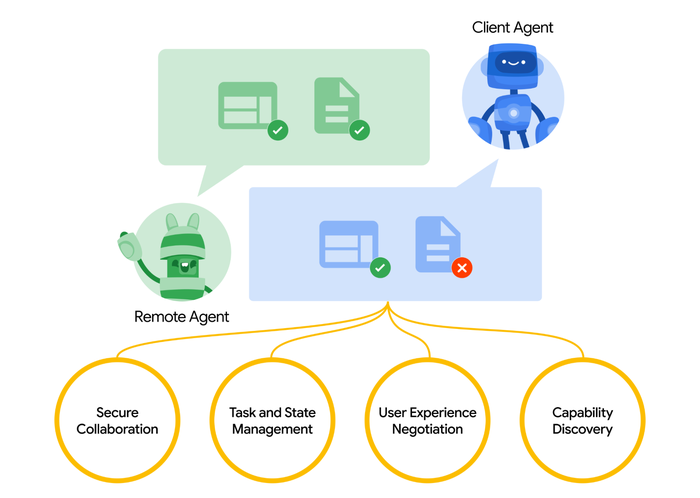The Agent2Agent Protocol: What It Does for AI OrchestrationThe Agent2Agent Protocol: What It Does for AI Orchestration
For AI agents to talk to one another, they need a standardized, secure and interoperable framework for communication and coordination. Here’s how A2A does that.

On April 9, 2025, Google debuted the Agent2Agent Protocol (A2A) as a standards-based approach that would enable AI agents to discover one another, exchange information securely and collaborate across systems. On June 23, 2025, Google donated its A2A protocol specification, accompanying SDKs, and developer tooling to the Linux Foundation in order to foster an “open and interoperable ecosystem for AI agent [with A2A] and other interoperability technology.”
Moreover, the Linux Foundation requires the transfer of any assets (e.g., the trademark, GitHub account) that could restrict the open source community. “This is important because a single company cannot ‘take it back’ later,” wrote Mike Dolan, SVP, Legal & Strategic Programs with the Linux Foundation in an email to NJ. “By contributing A2A … Google is ensuring neutral governance for the project for the remainder of its existence.”
A2A is how “agents collaborate, delegate, and manage shared tasks.” For example, using A2A a Salesforce Agentforce AI agent could connect with a ServiceNow AI agent. As written here, without “a common communication protocol, integrating these diverse agents into a cohesive user experience…would likely be a custom, point-to-point solution, making the system difficult to scale, maintain, and extend.”
The following graphic provides a high-level overview of how A2A works.

Source: Google
In A2A there are two types of AI agents: client and remote. The protocol facilitates communication between client agents and remote agents. Each agent advertise their capabilities using an Agent Card which includes information such as the agent’s name, what it can do and its supported authentication methods. The agents do not expose their internal states, memory, or proprietary logic, thereby preserving security and intellectual property, and making the protocol attractive for enterprises with concerns about data privacy. (See here for more on A2A’s enterprise security design.)
A client agent interfaces with the end user who initiated a task: book a flight, reserve a table, etc. Once the client agent has found the appropriate remote agent they exchange messages via HTTPS. In short, the remote agent acts on the tasks requested by the client agent. Messages represent a single turn or unit of communication between client and remote agents and contain updates on task progress, requests for additional instruction, etc.
A2A protocol enables intelligent routing of computational tasks, dynamic resource allocation, and context-aware prioritization. This makes it very good for data-intensive tasks and for automating workflows so they require less active human intervention.
As of this writing, more than 100 companies support A2A including founding members AWS, Cisco, Google, Microsoft, Salesforce, SAP and ServiceNow. Dolan noted that developers from those companies are now part of the A2A Technical Steering Committee which will be making decisions for the project going forward instead of Google alone.
Rao Surapaneni, vice president and GM of Business Applications Platform with Google Cloud noted that “PayPal, ServiceNow and Salesforce currently support A2A and are actively integrating it into their platforms. As businesses increasingly bring agents into production, we expect A2A adoption to rise.”
In summary, A2A enables AI agents to communicate and collaborate. And while A2A does have some momentum behind it, there are other protocol efforts underway including the Agent Communication Protocol (ACP) and the Agent Network Protocol (ANP).
About the Author
You May Also Like




